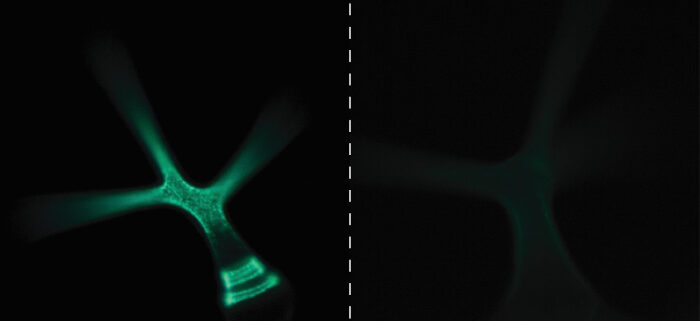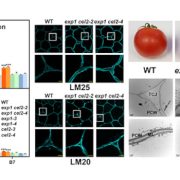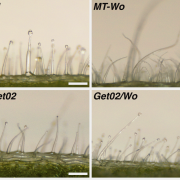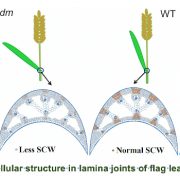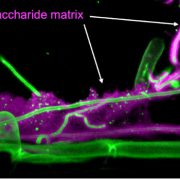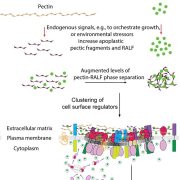A hair-raising story: EXO70 and MLO proteins jointly mediate secretion
Huebbers, Caldarescu, et al. examine how the EXO70 and MLO proteins cooperate in targeted deposition of cell wall components in trichomes.
By Jan W. Huebbers1 and George A. Caldarescu2
1 Unit of Plant Molecular Cell Biology, Institute for Biology I, RWTH Aachen University, Worringerweg 1, 52056 Aachen, Germany
2 Department of Experimental Plant Biology, Faculty of Science, Charles University, Viničná 5, 128 44 Prague, Czech Republic
https://doi.org/10.1093/plcell/koad319
Background: MLO (Mildew resistance Locus O) proteins reside in the plasma membrane of plant cells. Some of these MLO proteins are known for conferring susceptibility to the fungal powdery mildew disease. MLO proteins are also linked to the targeted delivery of proteins to the extracellular space, a process termed “exocytosis”. EXO70 proteins form another protein family that plays a role in exocytosis. These proteins are part of a larger protein complex, called the exocyst. The exocyst mediates the docking of intracellular membrane-covered and cargo-bearing bubbles (vesicles) to the cellular plasma membrane. The cargo transported by such vesicles also includes materials to build cell walls.
Question: Do MLO and EXO70 proteins cooperate in the targeted deposition of cell wall components in leaf hairs (trichomes) of the model plant species Arabidopsis thaliana? Do EXO70 proteins, like MLO proteins, promote powdery mildew infection in A. thaliana?
Findings: Compared to normal control (wild-type) plants, trichomes on mutant plants that lack three distinct MLO proteins or the EXO70 protein EXO70H4 showed severe defects in the targeted deposition of the cell wall carbohydrate callose. Moreover, trichomes on these mutants exhibited an altered composition of their cell wall. The notion that the three MLO proteins and EXO70H4 work together during exocytosis was further spurred by the observation that these proteins interact with each other. Furthermore, the colonization of leaves by the powdery mildew fungus was reduced in plants missing EXO70H4 and either MLO2 or MLO6 compared to wild-type control plants.
Next steps: Our work demonstrates that EXO70H4 cooperates with three distinct MLO proteins in trichomes for the targeted deposition of cell wall building blocks. As the A. thaliana genome encodes 23 EXO70 proteins and 15 MLO proteins, we will investigate whether specific EXO70-MLO couples exist. These pairs may mediate localized secretion in different tissues or cell types.
Reference:
Huebbers, Caldarescu, et al. (2023). Interplay of EXO70 and MLO proteins modulates trichome cell wall composition and powdery mildew susceptibility. https://doi.org/10.1093/plcell/koad319


